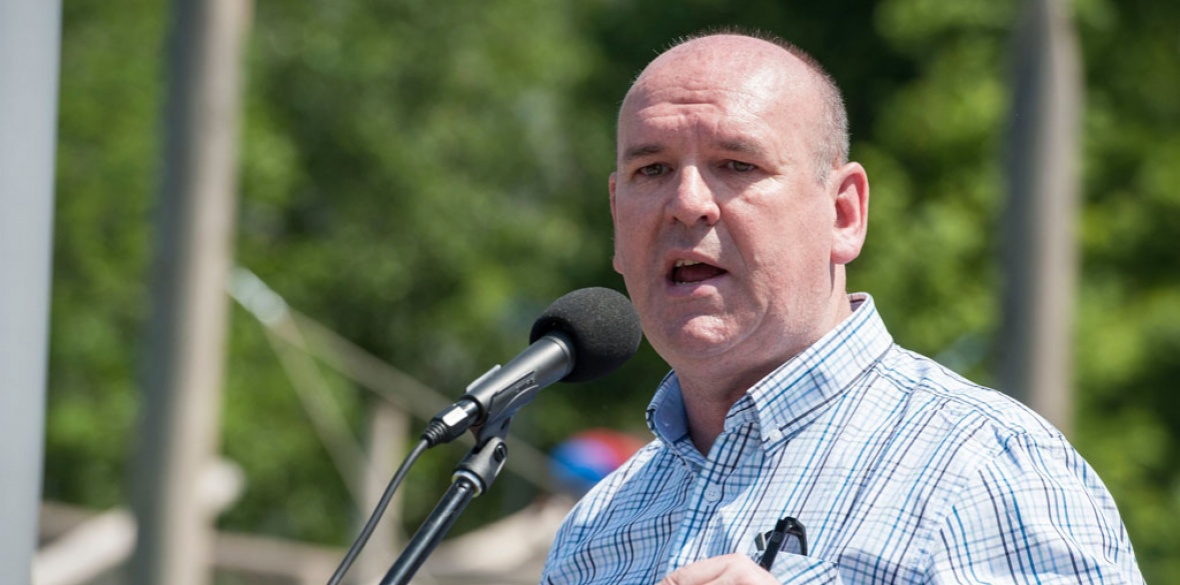This is the last article you can read this month
You can read more article this month
You can read more articles this month
Sorry your limit is up for this month
Reset on:
Please help support the Morning Star by subscribing here
WHEN I stood up at our assembly of delegates at our annual conference in Leeds last month, I was pleased to see how diverse the room looked.
I have spent 35 years on the railway, and 35 years as an active trade unionist, and I know how many train drivers look just like me. They are middle-aged, male, and white.
That’s why I was pleased to see so many more young members, women drivers, and black reps at conference this year.
While the trade union movement has not always been at the progressive cutting edge on some of these issues, this trade union is absolutely committed to equality and diversity in the railway industry.
As a trade union, we can only recruit, as members, those who have been selected, and trained, to work as drivers by the privatised train and freight operating companies.
We work with these companies, every day of every week, to ensure they encourage women, as well as men, and black and minority ethnic, as well as white, people to become train drivers.
But the harsh facts are that, in 2019, only 6.5 per cent of train drivers in England, Scotland and Wales are women; just 8 per cent are from an ethnic minority; and only 15 per cent are under 35.
These percentage figures do not represent the communities we serve because 51 per cent of the people in this country are female; 20 per cent in the last census identified as an ethnic minority; and 23 per cent are aged 18 to 35.
Since our last On Track With Diversity report was published seven years ago, we have seen, I am pleased to say, something of a cultural shift.
Old-fashioned gender stereotypes, reinforced by popular children’s television programmes such as Thomas the Tank Engine, based on those perennial bestselling books written in the 1940s, ’50s and ’60s by the Rev Wilbert Awdry, have given way, at least to some extent, to posters and adverts and magazine features and TV documentaries showing positive, modern images of women driving 21st century locomotives.
We have been pushing companies to allow more part-time and flexible working agreements because we know that the lack of such arrangements has been a barrier, in the past, to women coming into our industry as many women still take on the primary responsibility for childcare if they have a family.
There is, though, we believe, light at the end of the tunnel. Especially if the recommendations in our report are implemented by those of us who work in the rail industry.
We believe that a train driver is a train driver is a train driver — regardless of gender, sexuality, religion or race. And there is at least one piece of good news we should shout about.
Statistics compiled by the Government Equalities Office reveal that the occupation with the smallest pay gap between men and women are train drivers.
While the overall gender pay gap in Britain is 18.4 per cent, for train drivers it is just 0.7 per cent. The reason for this gap is because in our industry more women than men work part-time.
Train drivers are highly unionised and protected by strong collective bargaining agreements — factors which have helped deliver this success story.
Although nobody has to belong to a trade union, 96 per cent of the train drivers in England, Scotland and Wales choose to be Aslef members.
We have 20,370 members and the highest density of union membership in an industry of any trade union in this country.
We know the rail industry needs to do more to improve its recruitment policies — that’s why we commissioned this report from the Institute of Employment Rights (IER).
I want to thank Nadia Motraghi and and Ijeoma Omambala of Old Square Chambers for the detailed research, analysis, and recommendations in its pages.
We will work closely with the train and freight operating companies to ensure they are implemented.
When we asked IER director Carolyn Jones to work with us on this report, we said we wanted to examine the numbers of women, BAME, and young people in the rail industry.
We did not ask Nadia and Ijeoma to look at LGBT+ or disabled drivers as the data is unreliable. Not everyone is comfortable with being out in the workplace, or of revealing certain disabilities, and we knew those figures would not be accurate.
Aslef has been at the forefront of promoting diversity in our industry, and we will continue to work with the train and freight operating companies to ensure that train drivers are more representative of the communities they serve in 2020 than they have been in the past.
That is the challenge. And I know it is a challenge to which we will rise so that next year, when I get up to speak at our annual conference, or address a trade union branch meeting anywhere in England, Scotland or Wales, I will see even fewer people who look just like me.










